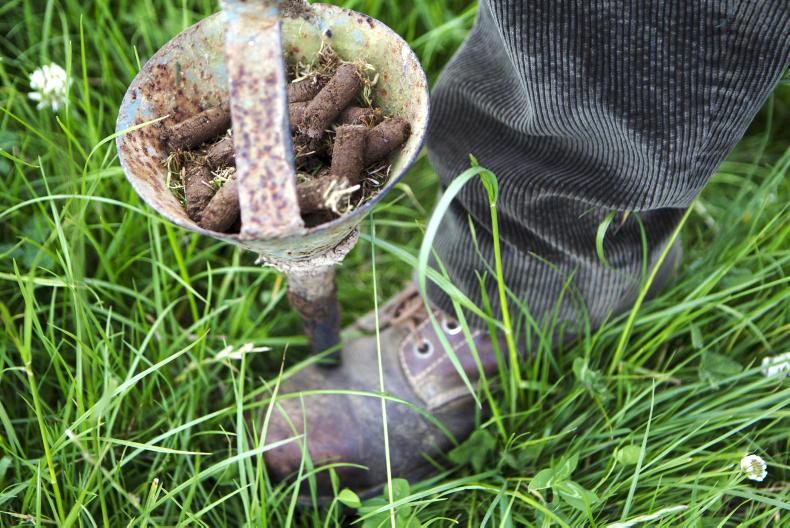There is still time to take soil samples on your farm to guide lime, slurry and fertiliser applications for the coming season. A standard soil test will establish soil fertility levels such as soil pH, lime requirement (LR), phosphorus (P) and potassium (K).
Getting the soils on your farm tested is the first step to maximising the efficiency of purchased fertilisers. Here are the answers to some of the most frequently asked questions related to soil testing.
Why should I soil test?
Soil test results provide a reliable basis for calculating the type and rate of lime, organic manure and fertiliser required in individual fields on your farm.
How often should I soil test?
Testing soils on a regular basis helps to measure changes in soil fertility levels over time.
Soils should be tested at least every four years to maintain soil fertility levels, however, soil samples can be taken more regularly to guide soil fertility management e.g when building-up soil fertility.
Is there still time to take soil samples?
Yes, soil samples can still be taken in spring on fields that have received no lime, P or K in the last three to six months.
What is the correct soil sampling depth?
It is recommended to soil sample to a depth of 10cm (i.e. the top 10cm of soil).
What is the recommended soil sampling area?
Take a soil sample every 2ha to 4ha, or at least one soil sample per field.
How many cores should I take per soil sample?
Take 20 representative soil cores from the sampling area or field and mix thoroughly to make up one representative soil sample.
Will the soil test report give me lime advice?
Yes. Lime advice (i.e. LR) is reported on the soil analysis report.






 This is a subscriber-only article
This is a subscriber-only article









SHARING OPTIONS: